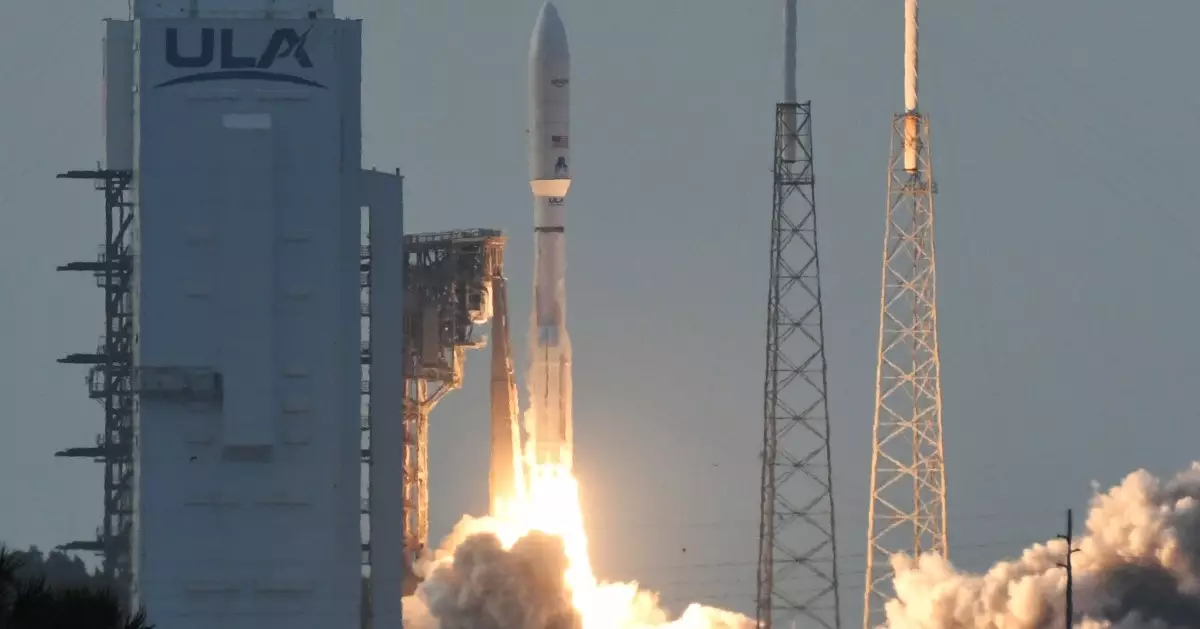In a significant stride towards redefining global internet access, Amazon has officially launched the first 27 satellites of its ambitious Project Kuiper initiative. With an innovative plan that entails deploying over 3,000 satellites into low-Earth orbit (LEO), Project Kuiper is not just an effort to bridge the digital divide, but a direct challenge to SpaceX’s formidable Starlink satellite internet service. The launch, executed by the United Launch Alliance (ULA), set the stage for a competitive landscape in the satellite broadband industry, a domain that is heating up as terrestrial internet solutions continue to struggle with the demands of modern connectivity.
The Launch: A Milestone in Satellite Deployment
On April 28th, the ULA Atlas V rocket ascended from Cape Canaveral at 7 PM ET, successfully delivering the first batch of Kuiper satellites into orbit. This launch was initially postponed due to adverse weather, underscoring the complexities associated with space endeavors. The successful deployment at an altitude of 280 miles (450 kilometers) paves the way for Amazon’s planned satellite network, which is engineered to deliver “high-speed, low-latency” internet. Acknowledging the immense effort behind this project, Amazon’s CEO Andy Jassy expressed pride in the team’s commitment, indicating that this launch is merely the opening act of a much broader narrative aimed at revolutionizing global internet access.
Facing the Competition: The Pressure is On
While Project Kuiper is set to make waves in the satellite internet arena, it finds itself amid fierce competition from SpaceX’s Starlink. With over 7,200 satellites already operational, Starlink enjoys a substantial lead and has announced ambitious plans to expand its fleet to an astonishing 34,400 satellites. This escalation not only showcases the competitive spirit of the tech industry but also highlights the stakes involved in deploying reliable internet access to underserved regions around the globe. The pressure to innovate quickly and effectively is palpable, as Amazon seeks to capitalize on its vast resources to accelerate the rollout of Project Kuiper.
Regulatory Challenges and Deadlines
Project Kuiper’s timeline is dictated by regulatory commitments, specifically a mandate from the U.S. Federal Communications Commission (FCC). To meet this requirement, Amazon must have a minimum of 1,618 satellites in operation by mid-2026, a hefty target that raises questions about the practicality of the mission’s pace. The FCC’s oversight illustrates the intricate balance between innovation and regulation, a crucial dynamic that influences the feasibility of such expansive projects in extensive orbital infrastructures. This regulatory landscape will not only dictate the speed of deployment but also shape the broader conversation around satellite internet and its governance.
Enhancing Connectivity for All
The true impetus behind Amazon’s endeavor with Project Kuiper is the promise of enhanced connectivity, particularly for marginalized communities with limited access to reliable internet services. In an age where digital communication is paramount, the ability to connect hundreds of thousands of individuals in remote areas can drive economic growth, education advancements, and overall societal enhancement. This democratization of connectivity initiatives can be pivotal, as it promises to level the playing field and provide opportunities where previously absent.
Looking Ahead: The Future of Satellite Internet
As we look to the future, the potential implications of Project Kuiper extend beyond simply competing with Starlink; they encapsulate a broader vision of transforming global communications. The excitement surrounding LEO satellite deployments is palpable, yet it is tempered by the challenges of space congestion and the necessity for sustainable practices in orbit. As satellite technology evolves, the industry must confront crucial questions: How can we ensure these advancements do not lead to increased space debris? What collaborative frameworks need to be in place to manage the growing satellite population ethically and responsibly?
Project Kuiper is not merely a corporate venture; it symbolizes a transformative leap in technology and a pivotal moment in the quest for universal connectivity. The stakes are undeniably high as we transition into this new frontier of satellite communications, and how these challenges are navigated will define the future of global internet access for years to come.


Leave a Reply